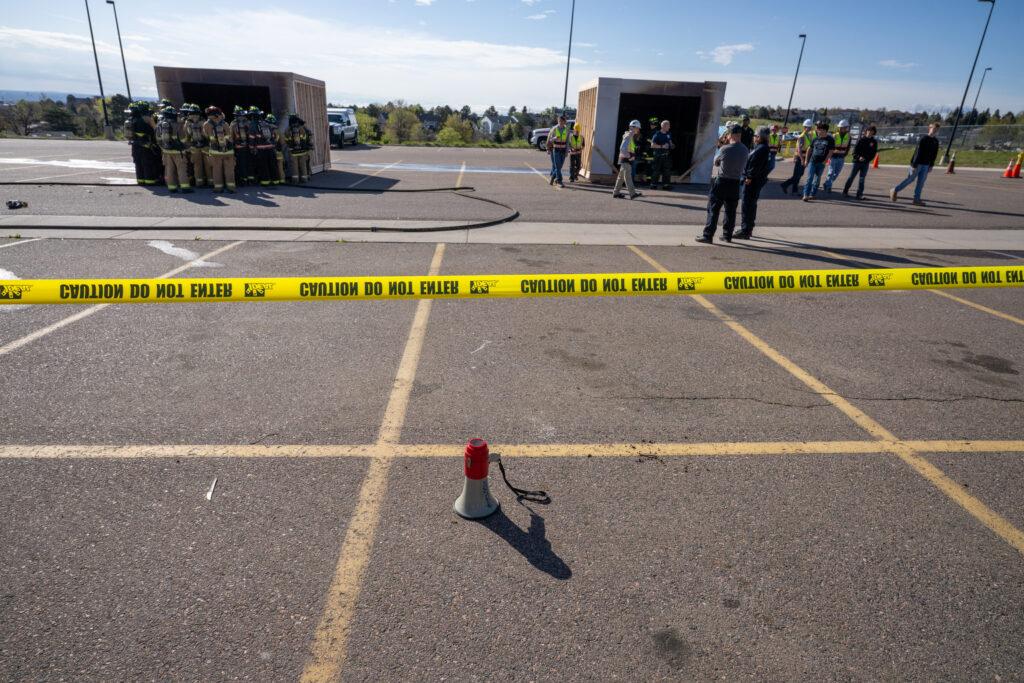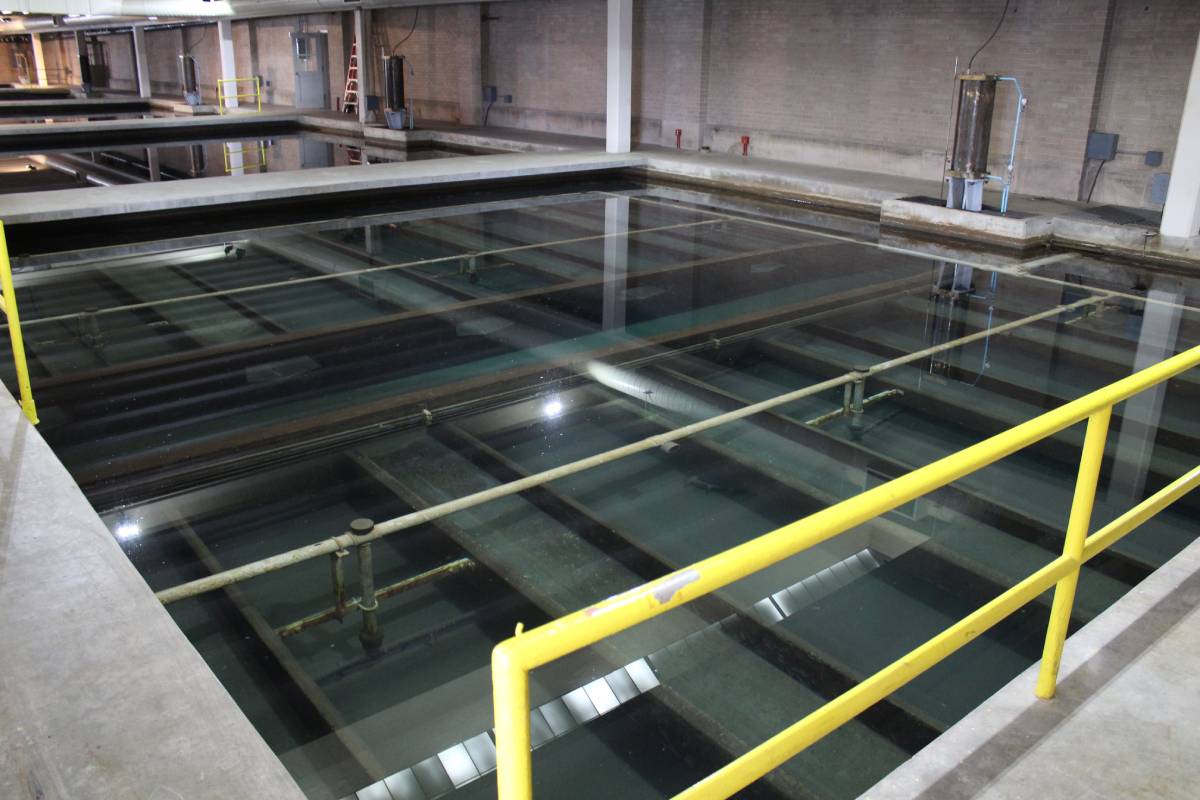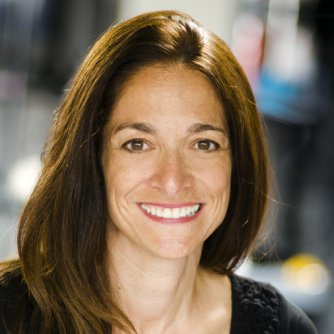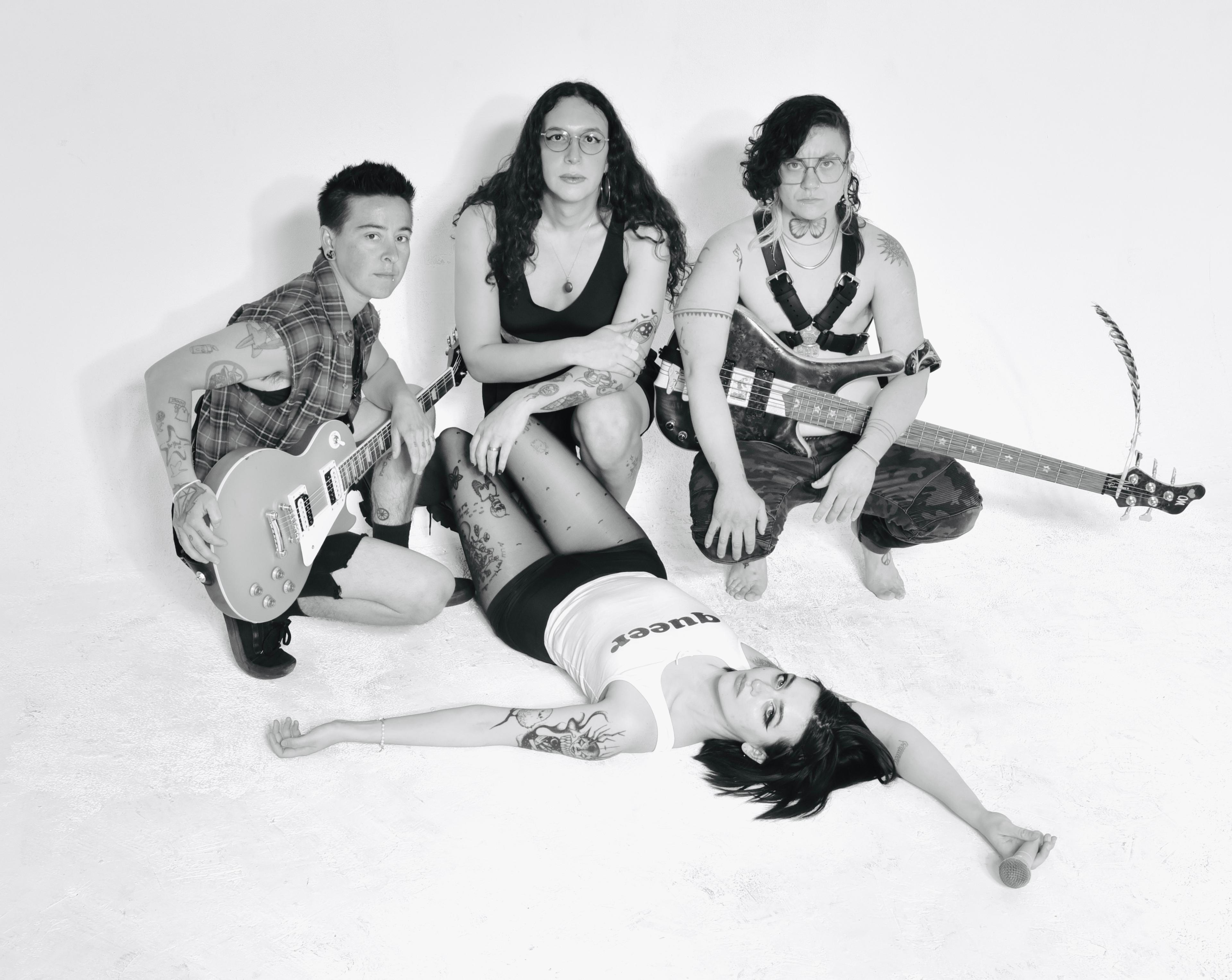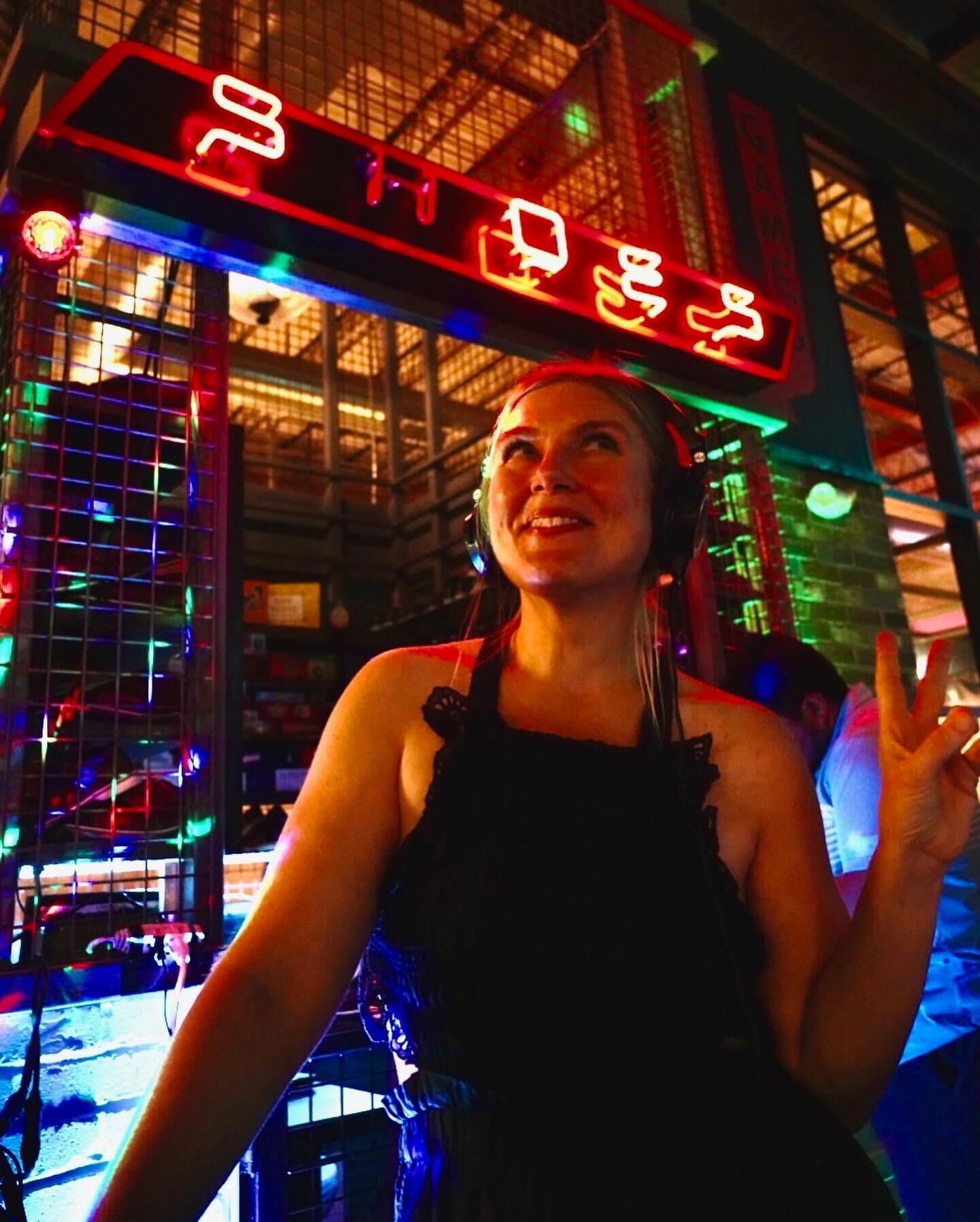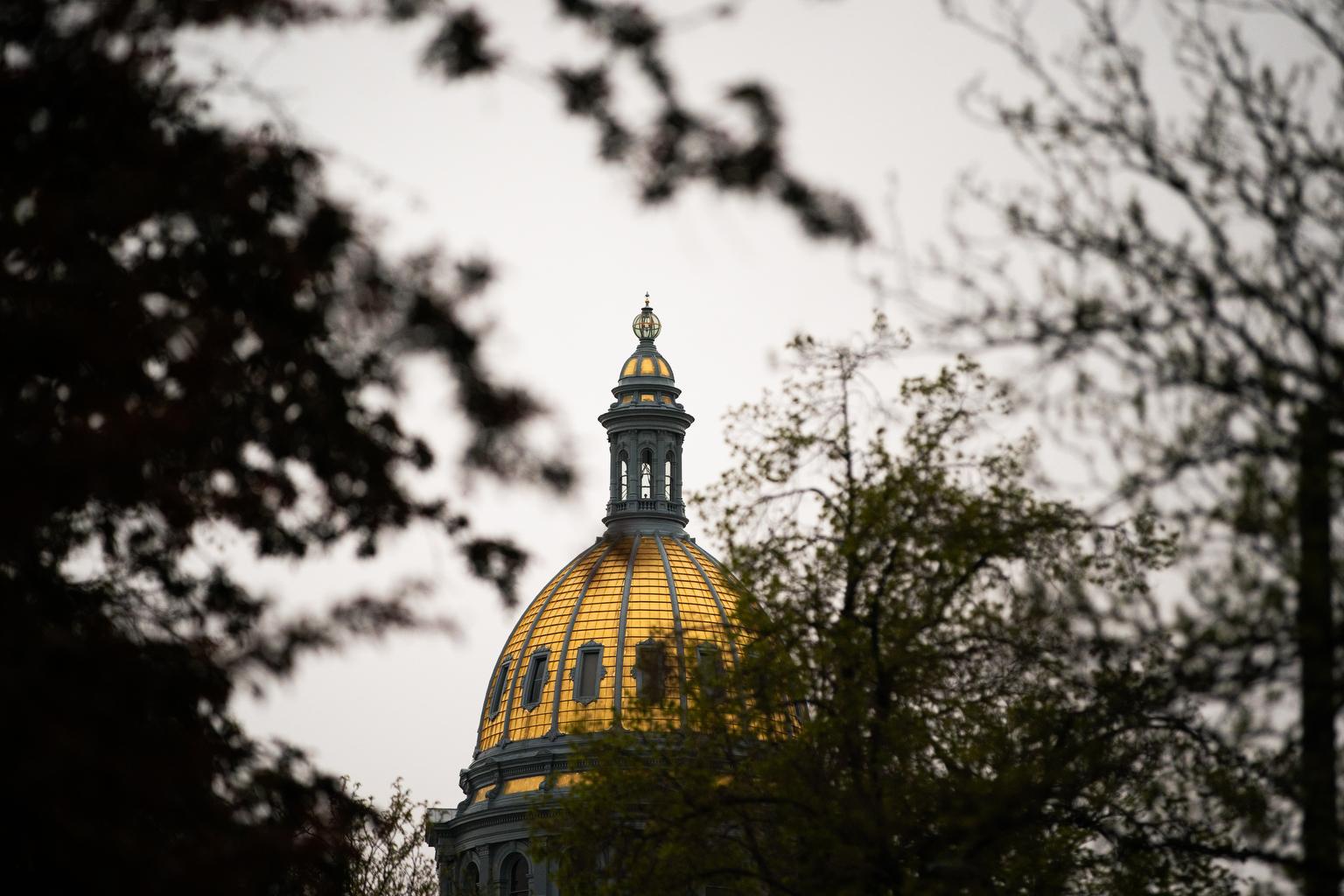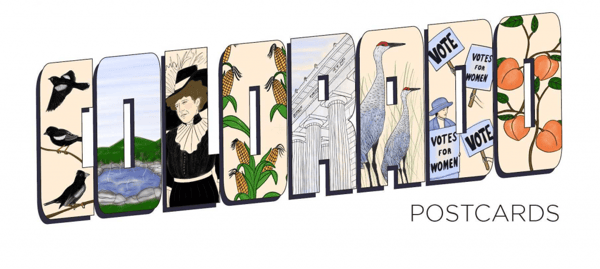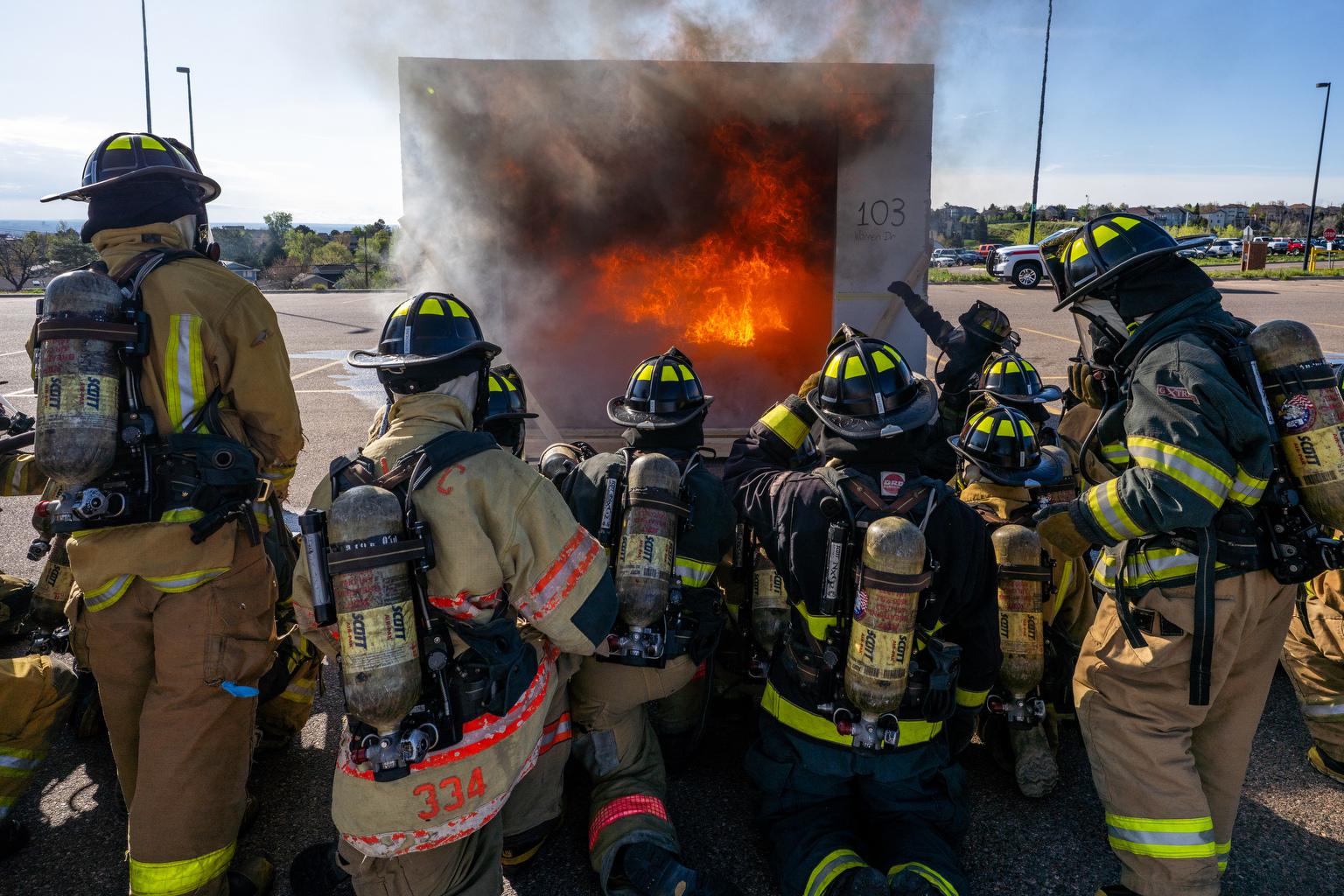
Inside three burned structures were equally burned pig cadavers. And a crime to be solved.
Students at Warren Tech in Lakewood, wearing firefighting gear, first assessed the damage before clearing the scene for forensic students in customized lab coats to go inside to retrieve the “bodies” and investigate the “crime.”
Elizabeth Edone, a senior forensic student, was tasked with the crime scene sketch. And she took seriously the attention to detail required for a job like this.
“I know there’s a lot of cases where people mess up a (crime) scene and then they’re never able to solve it or use that evidence, so I want to make sure I do it right,” Edone said.
Warren Tech’s Fire Day on May 5 gave her and other students a chance to do that, with hands-on experience. Warren Tech is a half-day program where high school students learn career-ready skills in their fields of choice.
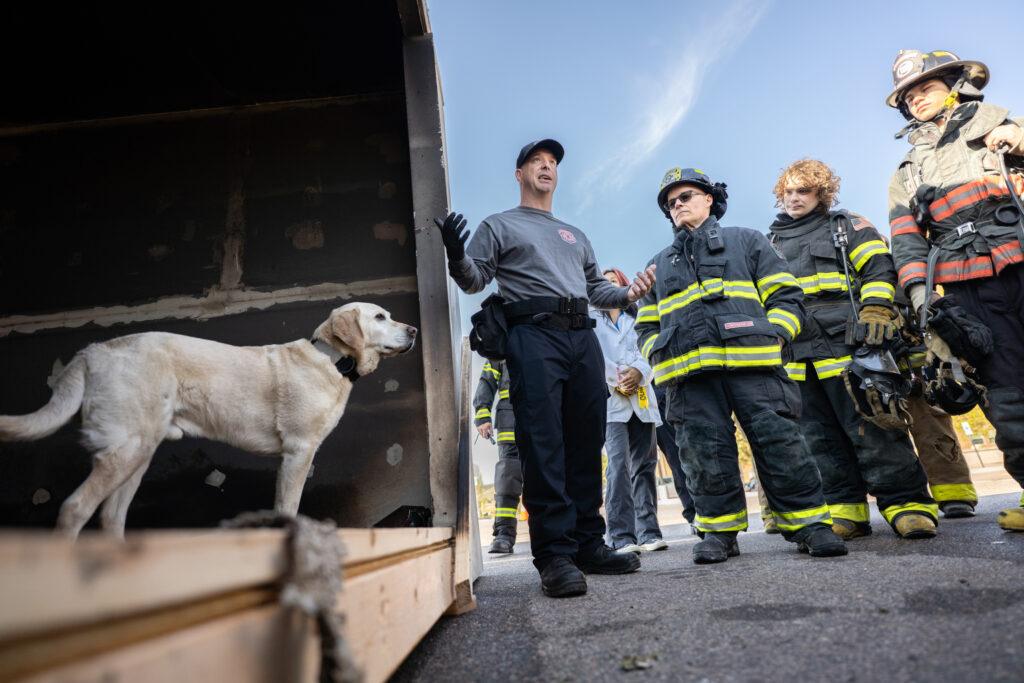
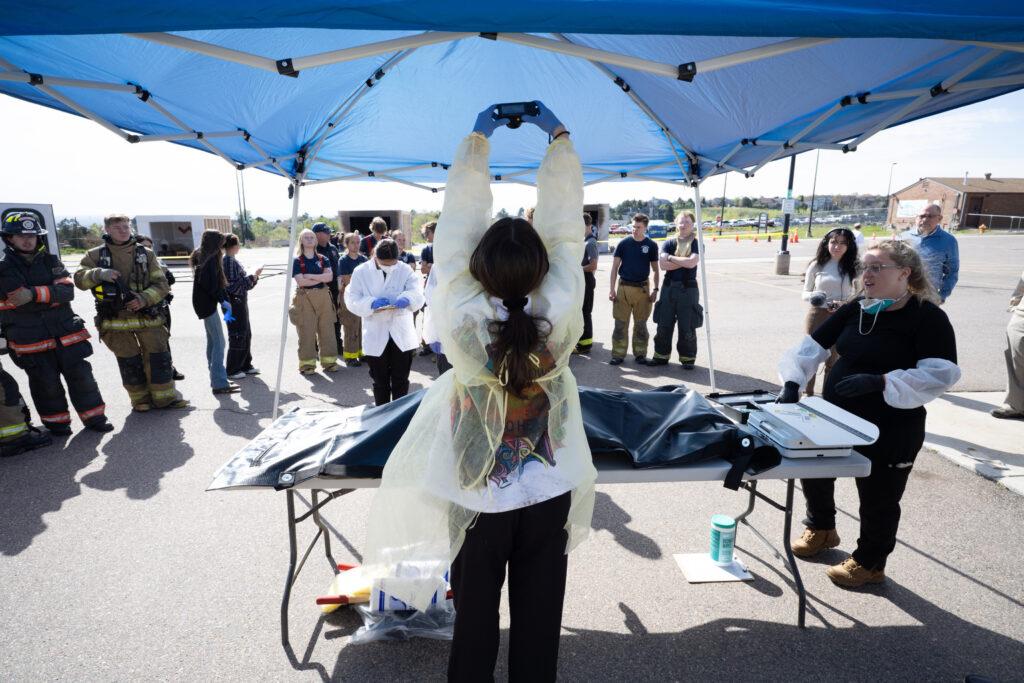
Martha Pattom is the associate principal of Health Science and Public Safety at Warren Tech.
“Students in these programs who actually go into these fields, like a forensic science student who goes on to be a coroner, are going to work with firefighters, with the criminal justice system, to be able to determine causes of fires,” Pattom told CPR News. “This is the way that the world works, authenticity in these positions. Students get to see a little bit of that.”
This project brought together four of Warren Tech’s career and development programs.
“This is a very big event. Preparation for it begins in the fall in the classroom, and this is the final application of all those skills they’ve been learning all year,” said Pattom.
The burn cells were constructed by building trades students, the fire was put out by fire science students, the cause of the fire was investigated by criminal justice students and the pig cadavers were treated by forensic science students. Pig cadavers are used because they most closely resemble the human body after it’s burned in a fire.

South Metro Fire Rescue and the Boulder County Coroners' office were on-site to help students through their day.
South Metro Fire Rescue Investigator Robert Sprinkle's daughter was the main idea driver behind Fire Day. When she was in high school, she took a forensic science class and asked him to come in and speak. Year after year, he would return, and eventually it progressed into something bigger.
“It just began with me speaking to her class and certainly things have evolved over the years,” Sprinkle said. “You wouldn't believe what we had to go through with the school system to get approval for this.”
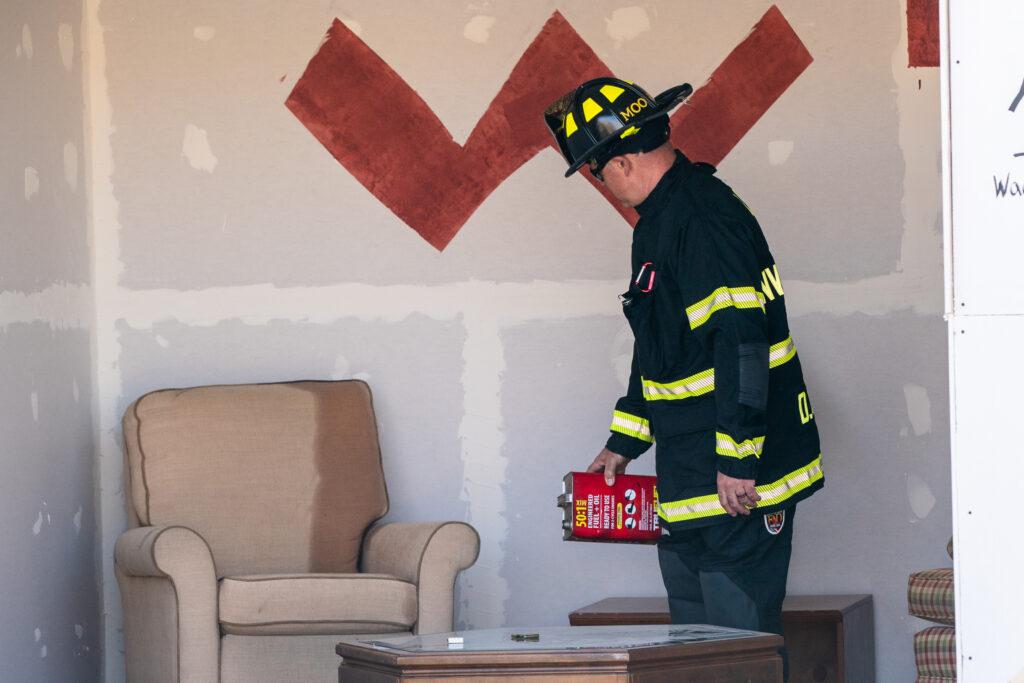
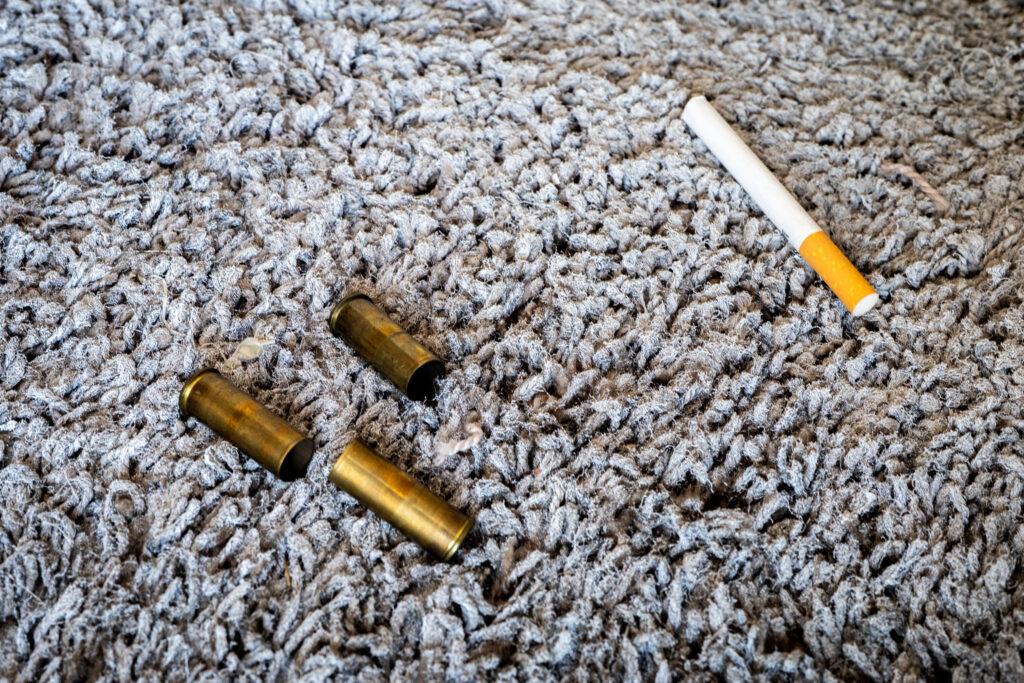
This was the first year three structures were built and burned.
“We didn't used to build burn cells and light stuff on fire. Now we do,” said Sprinkle, “So it's just been a process. Every year, we learn something. Every year we try to do more.“
And for students like Elizabeth Edone, it may very well shape her future career in forensic science.
“I want to make an impact on families and victims, finding the cause of death and being able to give closure to the families.”
